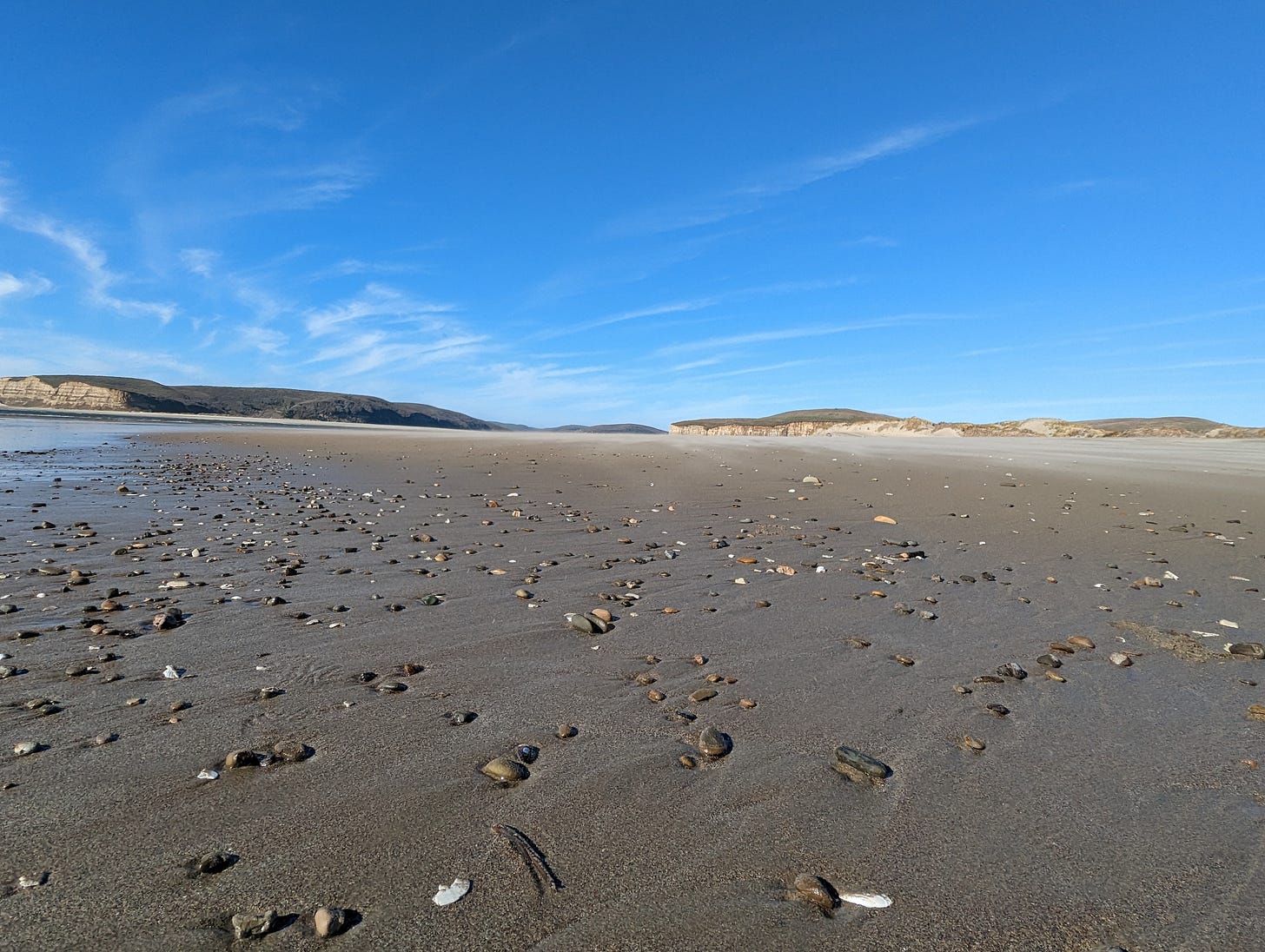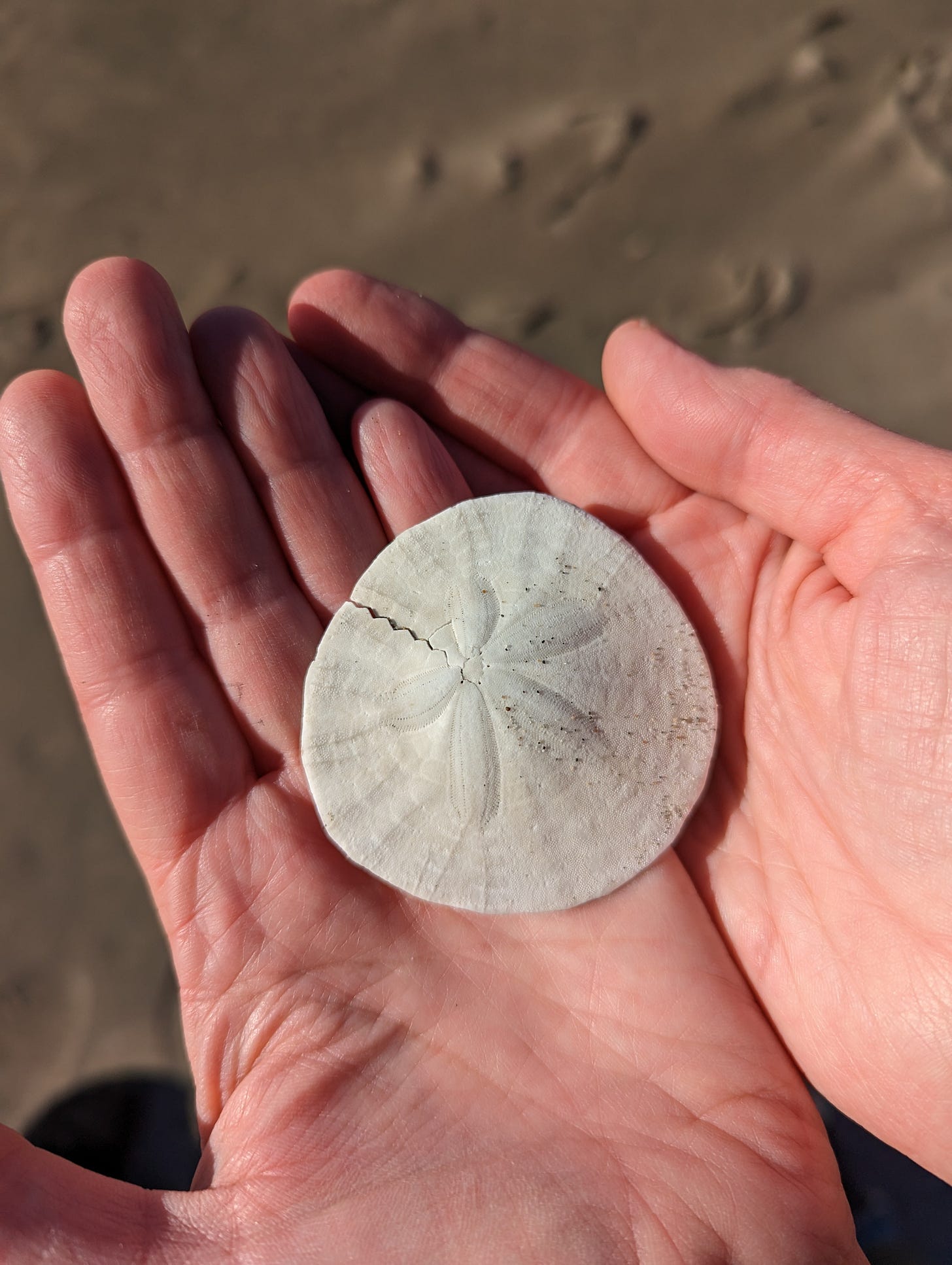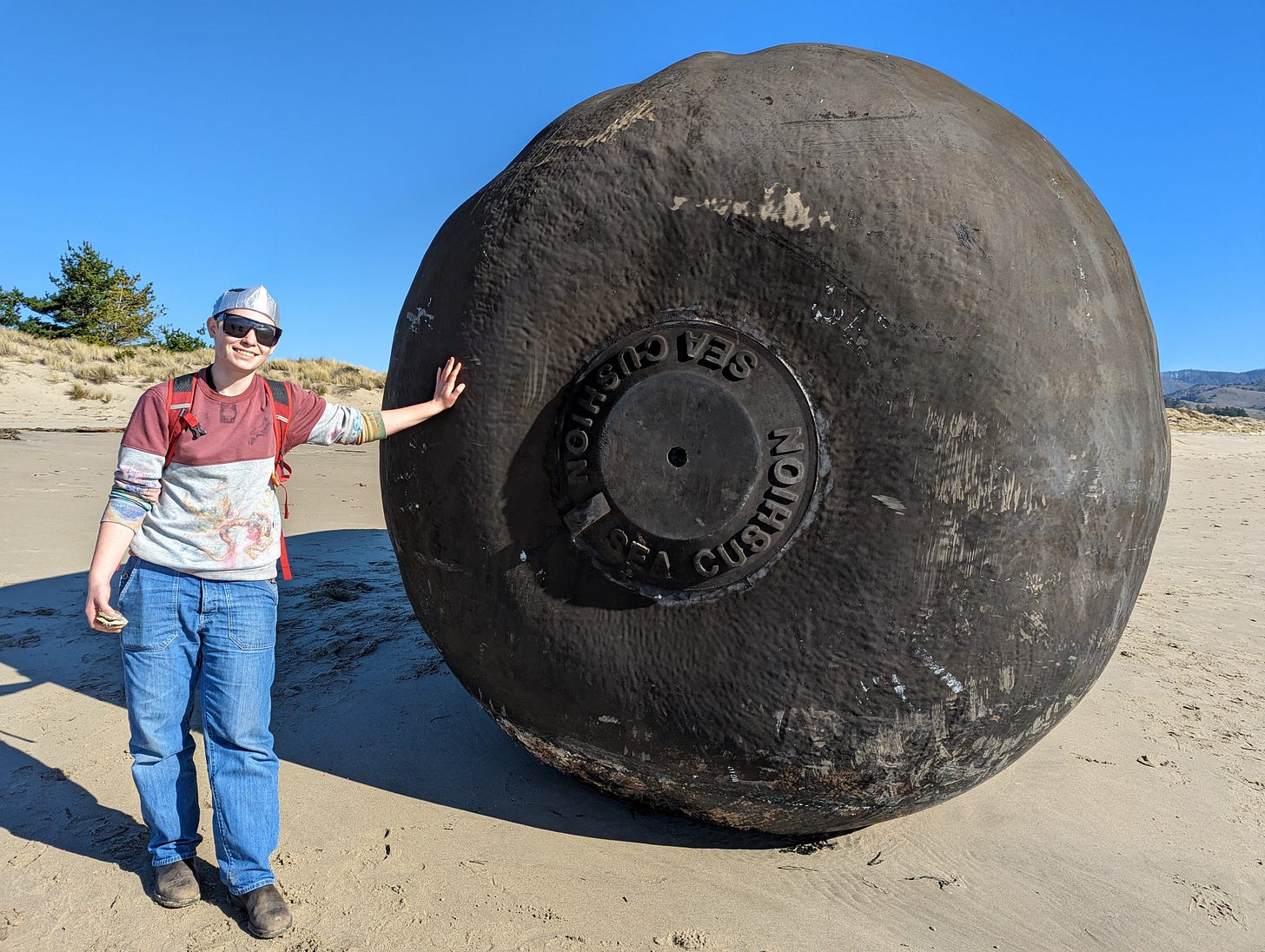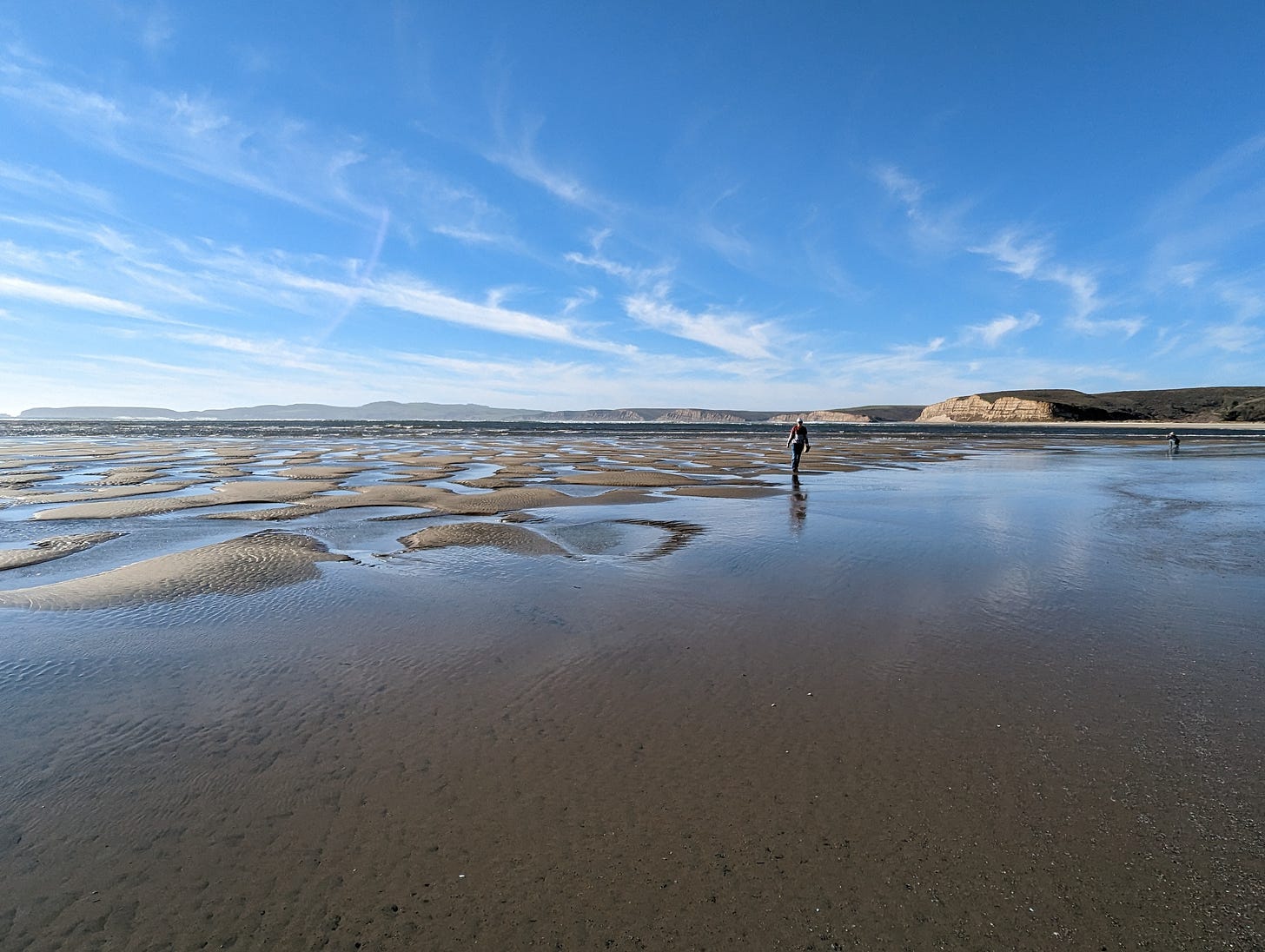“Try to praise the mutilated world.” – Adam Zagajewski
The storm had washed the long beach clear and cold. After a week of rain, vast expanses of sand shimmered bright with sunlight, flat and empty for miles. The ocean had served up its treasures: rocks shaped like hearts, sand dollars the size of my pinky, shells bearing their own barnacles, and small clumps of bright white Styrofoam.
It had also delivered stranger things. After we walked a mile along Limantour Beach we encountered a cylinder of black rubber the size of a small school bus. It was a sea cushion – a marine fender attached to docks or oil rigs to buffer them from the hulls of ships – ripped loose by unseasonable waves and left high and dry on the beach.
After another mile, another unmoored object, this one lapped by the swells of the incoming tide. It was an iron structure, its function no longer recognizable, warped, rusted, and completely encrusted with mussels, barnacles, and chitons. In an aperture of this metallic tide pool, ochre sea stars clustered and iridescent anemones waved their tentacles.
One more mile, and we came upon the eroding skull of a grey whale among the grasses at the base of the dunes.
It was New Year’s Day, and as I stood ankle-deep in the cold Pacific, I felt an oceanic sense of connection. Connection across time, as my numb feet rested on miniscule grains of quartz and feldspar that once made up the sandstone hills of the Point Reyes peninsula but had eroded into dunes, beaches, and a spit of sand that shifted and reformed with each storm, even as the peninsula itself drifted northward along the San Andreas Fault, half an inch a year, over millennia. Connection across space, as the water around my toes linked me to other shores – the Farallon Islands, Hawaii, the Indonesian archipelago. The ocean I stood in contained coral reefs dying from climate change and the Great Pacific Gyre of floating plastic. And connection to other living things, including tourists who dropped styrofoam cups on the beach, workers laboring on oil rigs in the Pacific, women who planted mangroves to protect coastal Bangladesh, and schoolchildren who gathered trash once a year on California’s Coastal Cleanup Day.
I thought of the final scene of Kurt Vonnegut’s novel Cat’s Cradle, when a tiny seed crystal of ice-nine freezes all the world’s oceans and all liquid water on the planet. It’s a sci-fi apocalypse that dramatizes our dependence on each other, the fragility of our spinning globe, and the web of water touching all of us.
The French writer Romain Rolland, inspired by the Hindu mystic Ramakrishna, coined the term “oceanic feeling” to describe a sensation of eternity and mystical oneness with the external world. Freud theorized that the experience of mysticism was a vestige of infantile consciousness, before a baby figured out how to differentiate self from other.
My hope, on the first day of a new year, was that our feelings of connection – whether grounded in religion, psychology, or science – could provide the starting point for change, the seed of widening gyres of compassion and responsibility, as our love for each other and our damaged world propelled us into action.










Oh, I had forgotten... so perfect - thank you.
Judith, absolutely loving your writing. The fact of our mutilated world is my central preoccupation and I so appreciate these gorgeous New Year's images and words. Thank you.